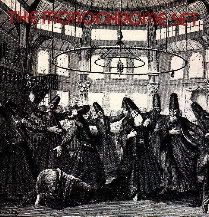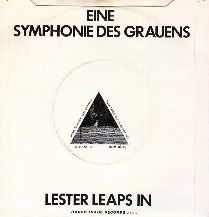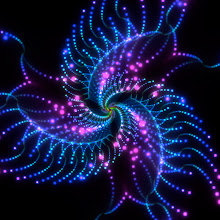

The Monochrome Set did lose out on a piece of the pop prize. They could have been big, but they weren't, which sucks for them but makes writing about them now that much more gratifying. Actually I'm too lazy to write about them, so here's what Aidan Meritt had to say about them in Positive Vibrations, his now-defunct Robyn-Hitchcock-obsessed zine from the early nineties:
I spoke to Robyn Hitchcock in Leeds one cold October night and asked him why the Soft Boys never became pop stars; he replied that like the dBs, the Soft Boys were one of the great "loser bands". Regrettably, the Monochrome Set fall into the same category. So how do we define a "loser band"? The simplest definition is a band that did everything right musically, had the charisma to carry it all off, won critical acclaim but never made it pay. A band that, had they sold one more single, had one more song on the radio, bought one more round at some muso executive's local hostelry, would have hit the big time with the force of a skinhead's boot. The fate of the "loser band" is to see copyists laughing all the way to the bank whilst they take their instruments down to the pawn shop. The Monochrome Set got closer than most to stardom, but were doomed by being just that little bit too good to be snorting cocaine off a naked model's breasts. Their glamour and mystique were just that little bit too subtle to allow them entrance to Stringfellow's; instead they were stuck with the college circuit and the occasional heading of the bill at the Rock Garden. The occasional tearful eulogy in the music press is their only reward.
The Monochrome Set were the archetypal post-punk art-school band. Formed from the ashes of Adam and the Antz (note the spelling), they began with a brace of wiry, angular singles on Rough Trade between 1978 and 79 with the core of their line up being Andy Warren (bass), Lester Square (guitar) and the enigmatic Bid on lead vocals; his most memorable claim was that he was descended from Indian princes. He was handsome and stylish enough to carry it off. Virgin Records' Din-Disc subsidiary clearly saw their potential and by 1980 they were in the studio recording their debut album The Strange Boutique. What can I say in a few sentences to do justice to this record? How can I explain to the uninitiated the class that oozes from its every pore? If one can imagine a classy swinging London party, probably circa 1966, with Andy Warhol, Jane Fonda, the Aga Khan and Mary Quant in attendance. Visualise the luxuriant seating, the fancy cocktails, imagine how exclusive the entrance to that party is. That's what The Strange Boutique sounds like. The album grazed the lower reaches of the national chart and there must have been a feeling that one more album of a similar standard could have shot the Monochrome Set to stardom.
"Eine Symphonie" is a single they released before recording The Strange Boutique, followed by a live version of the title track from the debut that appeared on live album "Fin" in 1985 and again on its renamed incarnation "The Good Life" in 1992.
The Monochrome Set - Eine Symphonie des Grauens
The Monochrome Set - Strange Boutique (live)
Friday, July 28, 2006
I love losers
Subscribe to:
Post Comments (Atom)



1 comment:
As I continue to trawl through the historical postings on your site, I find you are dead on the money again. Monochrome Set were an odd combination of the totally wacky (titles like "The Great Barrier Riff" and "Karma Suture"), the pretentious and the precious, all under laid with a certain dark current. It is that downbeat production that makes The Strange Boutique such a great album. Eligible Bachelors is also fine and there are spots of interest thereafter. Should have been massive, perhaps.
Post a Comment